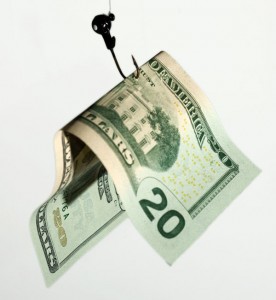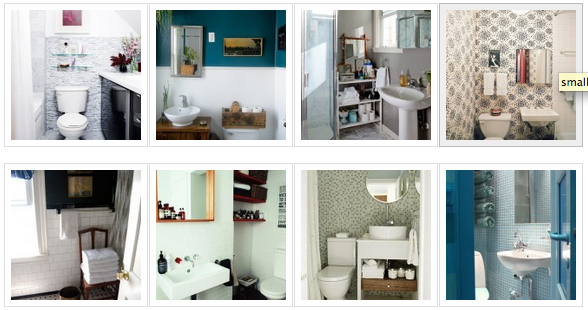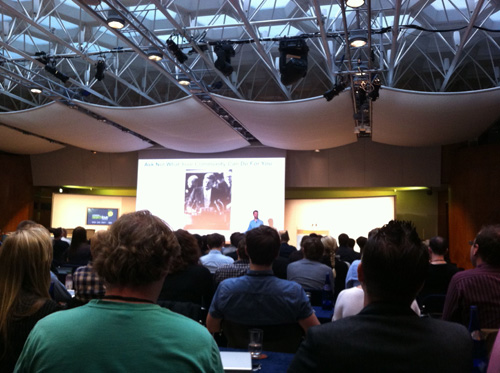 If you are a small business owner or webmaster and have been researching search engine optimisation, it is very likely you will have encountered the concept of 'linkbait'. Although the concept seems straightforward - produce content for your website that is of sufficiently high quality to encourage other webmasters to link to you - getting into the mindset of 'what linkbait looks like' is often unintuitive.
If you are a small business owner or webmaster and have been researching search engine optimisation, it is very likely you will have encountered the concept of 'linkbait'. Although the concept seems straightforward - produce content for your website that is of sufficiently high quality to encourage other webmasters to link to you - getting into the mindset of 'what linkbait looks like' is often unintuitive.
There is such a thing as a boring niche
Countless times I have read or heard people in the search marketing space say 'there's no such thing as a boring niche', and it simply isn't true. Of course there is, after all, 99.9% of the world's population probably think that SEO is a 'boring niche'. However, just because your niche is boring does not mean you can't produce linkworthy content with a decent strategy.
Additionally, linkbait is often presented as some kind of golden bullet, where the instruction is to produce content that is all of the following:
- pitched squarely at your niche
- includes your main target keywords
- aimed at a targeted, engaged audience
- highly shareable/viral
Unless you are very lucky or a highly talented marketer, it will not be possible to produce content that satisfies all these criteria, so the key is to stop trying. Instead, focus on number 3 - make sure your content is aimed at an audience that is online, engaged and achievable. This is the most important part of your strategy - if no audience exists to consume your content it will not generate links.
Your audience could be your customers, suppliers, non-competitive competitors (e.g. work in a different locality), resource centres, companies in the broader niche, or even simply bloggers.
Linkbait content ideas
Generally a blog is the best place to host linkbait as it is typically less commercial in nature, but if you do not have a blog you can simply create 'resource' pages to host your content, or even work your content into your standard page types. What content you produce will depend entirely upon the audience you have selected, your available resources and your brand/company limitations. Ed Fry from Distilled put together an incredibly thorough guide on developing linkbait ideas and strategy, which is great for ideas and brainstorming. I have worked through some straightforward 'real life' small business scenarios in the examples below.
Case Study 1: Local Plumber
Scenario: You are looking for links to help push you up the SERPs for local terms. It is important to you that any content you produce doesn't ruin your company image, and that you remain a source of knowledge and authority.
Strategy: In this instance you could target links from the broader niche of DIY. Since it is important to preserve your company image, you should probably be looking for instructional content. You could take a leaf out of the 'thought leadership' evangelists and give a bit of your knowledge away - perhaps with a 'how to' guide on how to increase boiler pressure, accompanied by a short video. You could create a series of short instructional pieces that offer everyday advice to the general consumer, that might be sufficiently useful to be linked to by DIY websites, or even other plumbers' websites from other regions.
This sort of linkbait can have dual benefits, as you might also be helping potential customers with your guides, who may then give you a call the next time they need to service their boiler (which is the type of work you wanted anyway).
Case Study 2: City Theatre
Scenario: You want to increase revenue specifically to your 'room hire' services. It is not your core business, but you see an opportunity to attract potential customers through search engine traffic.
Strategy: There is a never-ending requirement by commercial companies for stock images for their website or blog. Take advantage of all the events, weddings, conferences or workshops that occur regularly on your premises by taking pictures of the events. Presuming you can get permission to 'own' and use the photos on your website, you can set up a little resource section for each event type, load on all your best images, and release them under a creative commons license. This basically means that you allow other commercial organisations to use your images, so long as they provide attribution back to you (i.e. a link).
It is worth working through a thorough guide on how to optimize images for SEO and how to release them under a creative commons license; I would suggest this one from Michael Gray.
Case Study 3: Gift House
Scenario: Your website is product based and very commercial in nature. You see large potential in search engine traffic but don't have the resources for blogging or 'creative' content.
Strategy: Use your products as the bait themselves. Search for products through your suppliers/manufacturers that are cool, funny or shocking, which can then be pitched to relevant bloggers to write about or feature. They don't even have to be all that 'interesting', you can get away with simply useful or practical products if you are prepared to send samples out for reviews or competition prizes. You can also look to make your products more exciting by using video to animate them; even with a small budget you can make a fairly standard product jump off the page with a cool video.
By using your products as linkbait you can also generate leads or sales, and videos can offer a further talking point for sales staff or account managers. At Ideasbynet we used this concept to produce a video of one of our phone holders, which gave us a load of links and several thousand pounds worth of sales:
Hopefully some of these ideas will get you thinking in the right direction - as with any linkbuilding tactic it will be a case of seeing what works and then looking to replicate your successes. Once you do find something that works, however, a whole host of other ideas will begin to occur to you as you start to think along certain lines - the hardest part is often coming up with the original ideas and having the confidence to follow through with them.
This advice comes with one major caveat - there is no point in producing great, linkworthy content if you are not prepared to put some effort into promoting it. Check out my previous post for ideas on how to get started on active content promotion techniques.
Learn About Linkbait:


